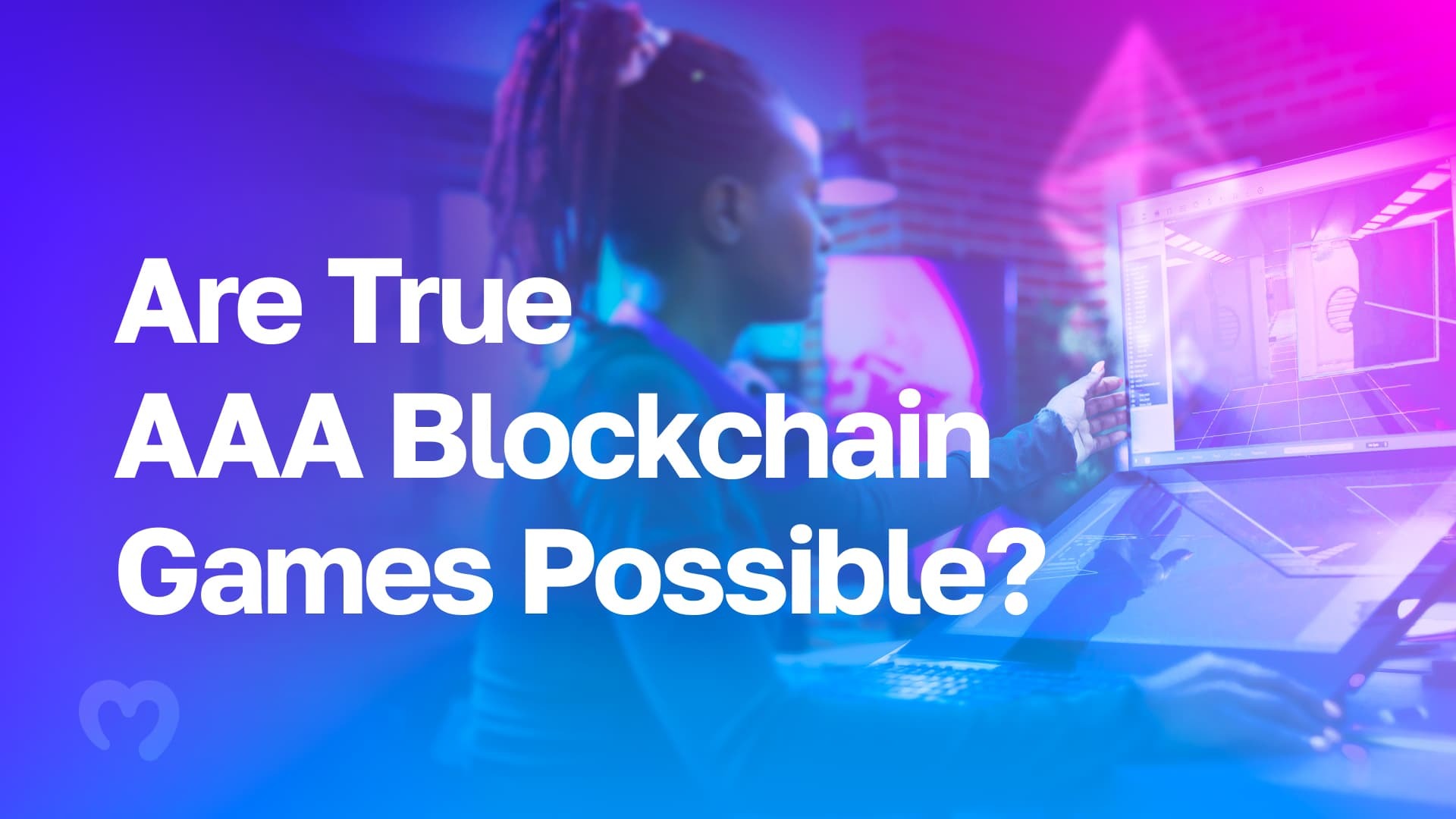For AAA blockchain games to materialize, certain things need to happen. The problem for many traditional gamers is the quality of gameplay on the blockchain is lacking. While thousands of blockchain games exist, most don’t offer the kind of experience they’re accustomed to. Also, the graphics are not always up to par with traditional video games.
First, there isn’t a blockchain platform that’s easy for mainstream gamers to use at scale. After all, traditional games can attract more than 100 million players a day. Can a blockchain game handle that kind of player traffic? Second, the best games take time to build – often a couple of years or more. Creators can’t build greatness in a month. So, there are likely many AAA blockchain games still in the works.
Right now, there are fun games with gamified economies, and that’s a start. But due to the reasons above and others, AAA blockchain games are still virtually nonexistent.
What Will Pave the Way for AAA Blockchain Games?
The sector needs to overcome specific challenges for the top games to come to the blockchain en masse. First, players need a way to onboard without spending exorbitant amounts of cash on in-game assets. Furthermore, when gamers come over from the traditional space, they want things to happen instantaneously. They don’t want to fuss with gas fees and endless MetaMask transactions. While we’re on the subject of gaming assets, you can learn more about how to convert an NFT to an in-game item on the Moralis.io blog.
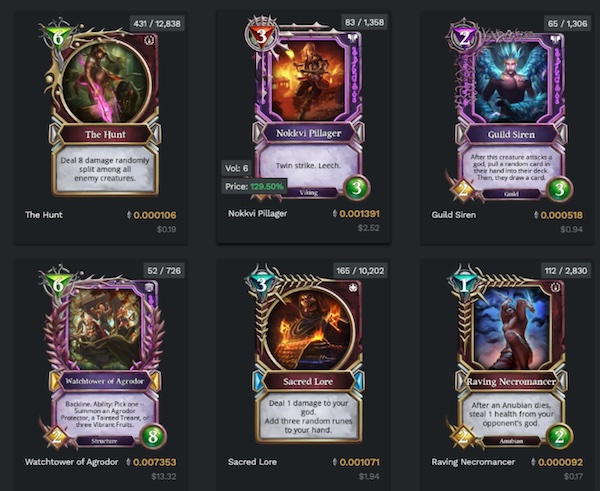
Scale and UX need to improve for the billions of gamers and developers to get on board. Game creators surely want to build AAA blockchain games. But having first to become economic experts or smart contract developers is not so appealing.
The crypto bear market is still dragging on, and no one knows how long it will last. So, now is the time to learn how to invest during a crypto bear market. Furthermore, understanding crypto crashes is also a topic worth investigating. Check out our blog articles at Moralis Academy to learn more!
Overcoming the Issues with Blockchain Games
Below are some of the factors impeding the progress of AAA blockchain games.
1. Gas Fees and Transactions Per Second (TPS)
Most blockchain gaming platforms are still trying to solve this first problem – how to deal with high gas fees and low transaction speeds on Ethereum? Trading an asset on Ethereum can cost anywhere from $15 to hundreds of dollars in gas fees, depending on network congestion. This predicament is a problem for an economy that wants to create millions of NFTs for players to trade. No player wants to pay $50 in gas fees on a game asset that costs a dollar.
2. Scale
How can a massive game such as World of Warcraft onboard its 100 million players to a blockchain and not face scaling issues in the present ecosystem? Scaling is definitely a hurdle for AAA blockchain games.
3. In-Game Asset Liquidity
Another problem is that players can’t easily trade in-game assets between layer-2s. In other words, players can’t match asset trading on one marketplace with other marketplaces. Every NFT market is unique, and building a liquidity standard that allows users to trade an individual in-game item anywhere is tricky.

What Immutable X Does for Blockchain Games
Fortunately, projects such as Immutable X are working to resolve the above issues and others. The goal of Immutable X has always been to enable teams to build world-class games on the blockchain without technical limitations.
Providing inexpensive gas fees is an improvement other platforms have accomplished with sidechains and layer-2s. However, eliminating gas is a massive advantage for UX and developer experience. This advantage belongs exclusively to Immutable X. Their scaling solution keeps users’ gas fees at zero even when they need to mint millions of NFTs. Are you ready to build a game on the blockchain? Take the Unity Blockchain Game Development course at Moralis Academy!
Immutable X’s unique positioning allows them to solve the core issues that AAA games will face when moving to the blockchain. So, let’s look more closely at what they do.
Immutable X Games
Immutable X combines the game developer “Immutable” and the scaling startup “StarkWare”. Before rebranding, Immutable started as “Fuel Games”. However, they ran into problems scaling their games (i.e., Gods Unchained) on Ethereum. So, Immutable partnered with StarkWare in 2021, which uses newer technology, “STARK proofs”. Therefore, Immutable X combines Immutable’s understanding of gaming NFTs and StarkWare’s scaling technology.

Immutable X’s goal is to become the backend for all digital trading on Ethereum. It is solving the issues of scale and liquidity with multiple rollups. Moreover, it currently offers one of the best layer-2 solutions on Ethereum for NFTs.
Besides Gods Unchained, some other notable Immutable X games are Illuvium and Guild of Guardians. In sum, Immutable X is building the infrastructure for smart contract developers to construct the scaffolding so that game developers can continue to be game developers and not have to worry about the backend.
Immutable X Games and Liquidity
In a recent interview, Immutable X co-founders Robbie Ferguson and Alex Connolly addressed how their project will help more game creators move to the blockchain. TPS is a problem on Ethereum. But with StarkWare’s zk-rollups, Immutable X can reach speeds of 10,000 TPS.

Immutable X is introducing the first cross-rollup liquidity solution. This breakthrough means that games will have a dedicated layer-2 or layer-3 instance (see below). The good news is AAA blockchain games with the reach of World of Warcraft can onboard their 100 million players with a dedicated 10,000 TPS.
But it’s not just about achieving average transaction speeds. An important point to consider is the total theoretical TPS. For example, what happens if two major games launch simultaneously, awarding millions of NFTs to players? The infrastructure has to be resilient enough to handle such a use case. One bad user experience is all it takes to turn new users off a game. Do you want to create your own NFTs? Check out our NFT coding tutorials!
Liquidity and Composability
The next problem on the horizon is ensuring liquidity and composability so users can trade assets from one layer-2 to another. Many game publishers and developers need composability, and Immutable X games can move from one type of rollup chain to another.
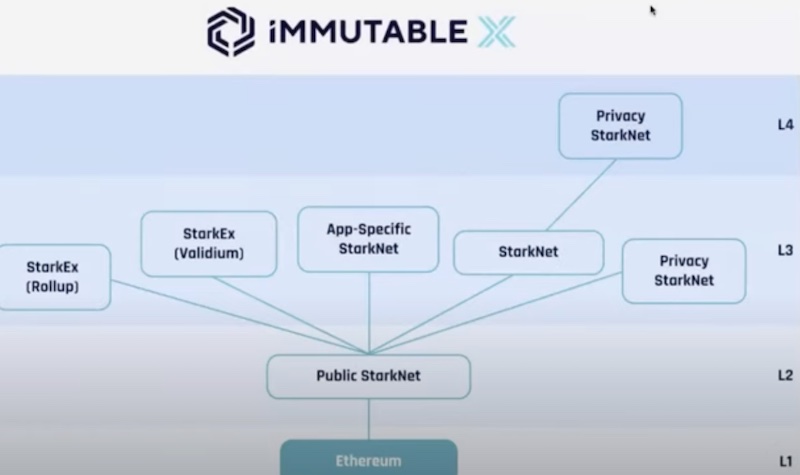
That’s why Immutable X’s cross rollup liquidity platform is supercharging liquidity highways so players can trade from any marketplace such as GameStop or OpenSea and have the necessary TPS to support the next billion players on Ethereum.
The fundamental thing Immutable X is doing is building a liquidity bridge across every platform. It’s creating a global pool where users can trade any asset on any rollup on any marketplace instantaneously in a single transaction. Such innovation builds up massive network effects around liquidity and applies to any Immutable X-supported rollup. At present, that would be any rollup on StarkWare.
The crypto crash has left some carnage in its wake, and Celsius Network is one such casualty. If you’re wondering what’s happening with Celsius Network, read one of our recent articles!
Blockchain Games and Security
Let’s face it. Every other layer-1 or sidechain created thus far has an inferior security model to Ethereum’s, and users have lost billions of dollars because of it. The Poly Network hack, the Ronin Bridge hack, and the Luna meltdown left many developers scratching their heads. Imagine developing on top of an ecosystem such as Luna, only to have the whole thing cave in on you.
Put that in the context of game developers who want to build long-term games. Such an endeavor requires a multi-year investment costing millions of dollars upfront. Spending this kind of money and time demands finding a winning ecosystem to build on.
The reality is that security fundamentally matters, and game builders need a chain they can trust. Ethereum is already there. It’s solid and has been entirely stable for most of its lifespan. Developers have invested a ton of work in building the core infrastructure to make Ethereum the most reliable right and performant infrastructure in the space.
Solana competes with the Ethereum blockchain, and Rust is its programming language. Learn about Rust & Solana at Moralis Academy.
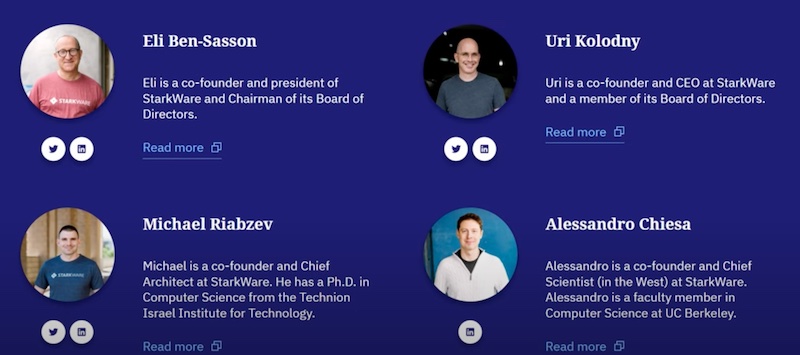
StarkWare’s StarkNet and StarkEx
By communicating with game studios regularly, Immutable X figures out what game builders need to make their AAA blockchain games happen. Different studios want different trade-offs. Some must have a dedicated rollup because they need to “hyperscale”. Some require additional privacy guarantees regarding data availability.
By partnering with StarkWare, Immutable X games can offer creators rollups that make sense for their games. It stands to reason that game developers don’t want to share space with other developers. They’ll want their own chains for more control over how their zk-rollup looks and feels.
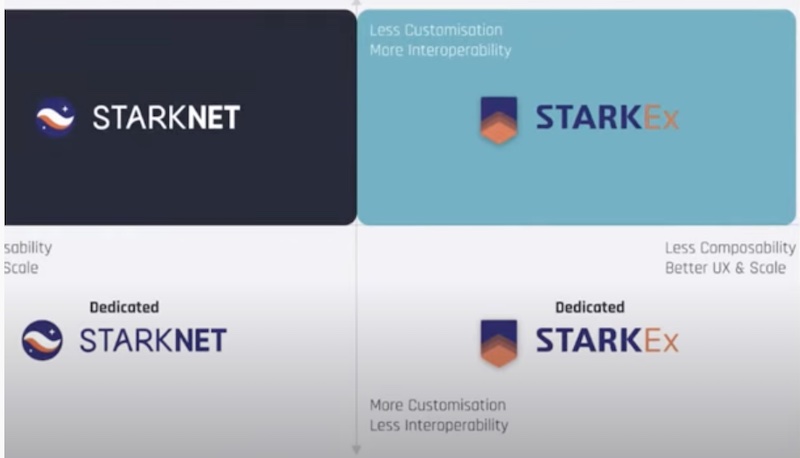
It also means they have to support multiple rollups. Looking at the graphic, you can see the different offerings with StarkNet and StarkEx. StarkNet is still early in its product lifecycle, but it will be increasingly important for Ethereum.
StarkEx’s offering is an application-specific rollup optimized for the needs of NFT projects. That means these projects can deploy right now and experience robust scaling and a superior trading experience with no gas fees and instant confirmation of transactions. But there are some trade-offs: more interoperability gets offset by less customization. Likewise, more customization gets offset by less interoperability. Further, better UX and scale get offset by less composability.
Layer-2, Layer-3, and Fractal Scaling
We’ve written other articles with more extensive coverage of zk-rollups and layer-2 solutions. For more info, please visit the Moralis Academy blog. For this article, you just need to understand that layer-2s are conceptually very simple. Layer-2 sits on top of Ethereum (layer-1), where the rollups reside. In addition, layer-3 (the new frontier) gets built on top of layer-2.
Essentially, layer-2s take transactions and process them on that layer. Next, they roll the transactions up to layer-1 using a zk-rollup or an optimistic rollup. Lastly, they verify that those transactions happened. Thus, if a solution is not confirmed on Ethereum, it’s not a proper layer-2 solution.
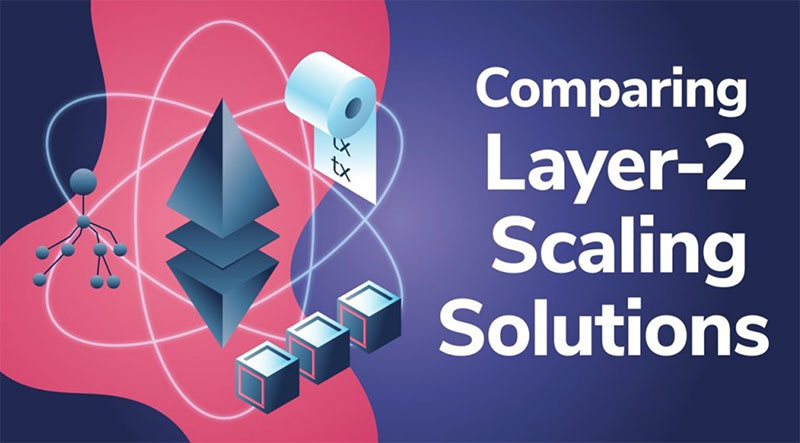
The way to look at layer-3 is to take the same concept and do it one more time. So, we could collect multiple transactions on layer-3, generate proof for those transactions, and verify that proof in a layer-2 transaction. The layer-3 level gets settled on layer-2, which ultimately gets settled on layer-1. This process involving layer-3 is called “fractal scaling”. Further, layer-3 fractal scaling increases the surface area and the ability to onboard users – which is a good thing!
AAA Blockchain Games – Summary
For the top games to come to Ethereum, they’ll demand an excellent UX and developer experience. A platform will need to empower developers with all these various tools and complexity on the backend to make their experience as excellent as it can be.
What Immutable X games can offer doesn’t exist yet in any sidechain or other solution. Furthermore, co-founder Robbie Ferguson stated that one of their games, Gods Unchained, minted 20 million NFTs across a 3-day period, which is more than any other Ethereum game combined. Furthermore, Immutable X games offer instant trading, massive scalability, and zero gas fees for minting and trading NFTs. By creating a seamless ecosystem, Immutable X is in the business of getting the world’s best games to build on Ethereum. Hopefully, others will follow suit, and one day we’ll no longer have to ask, “when blockchain games?”
If this article has inspired you to develop your own game, check out the Ethereum Game Programming course at Moralis Academy right now!
